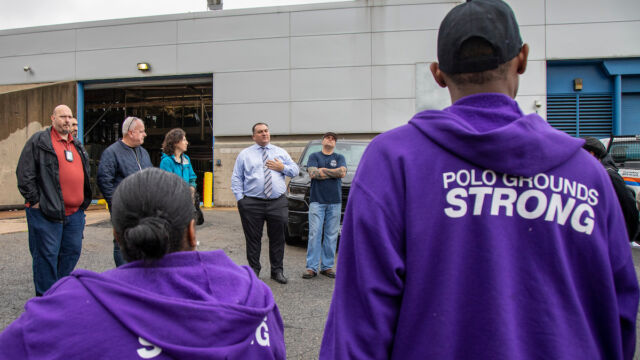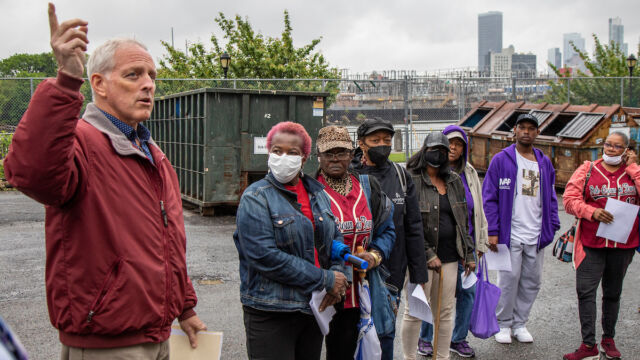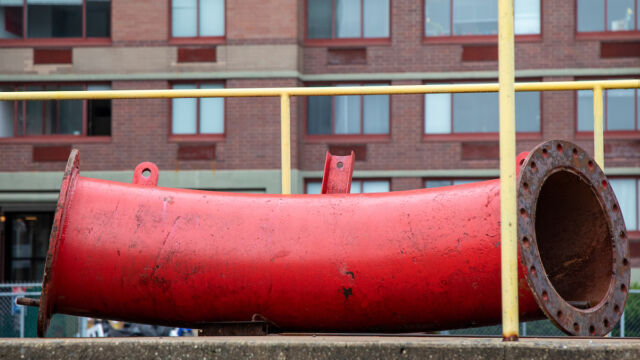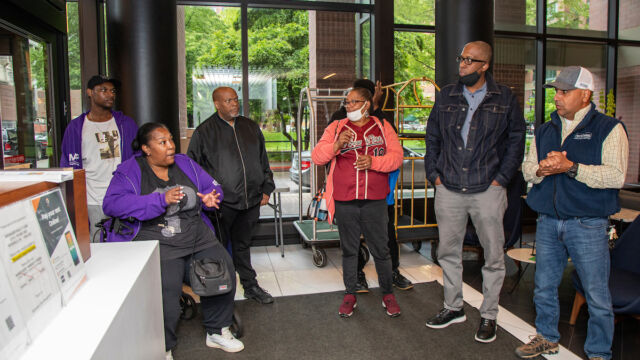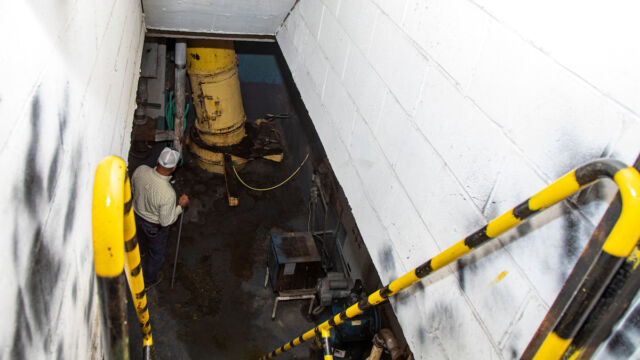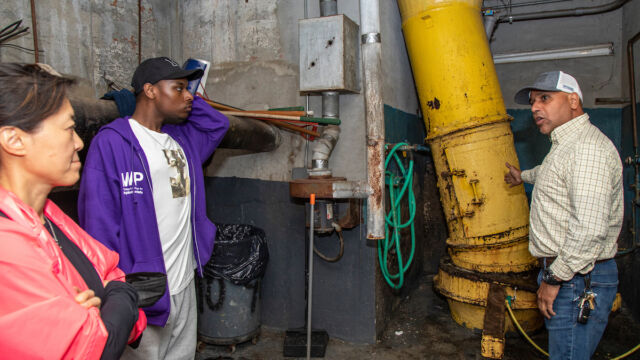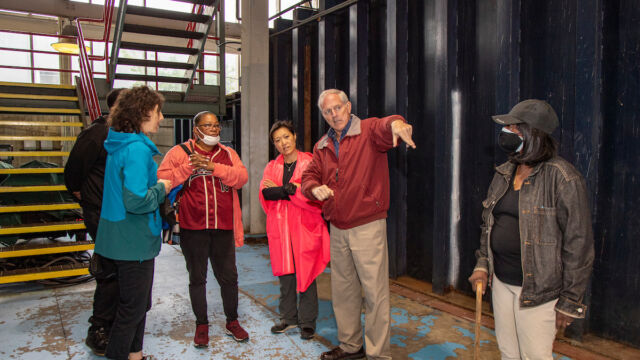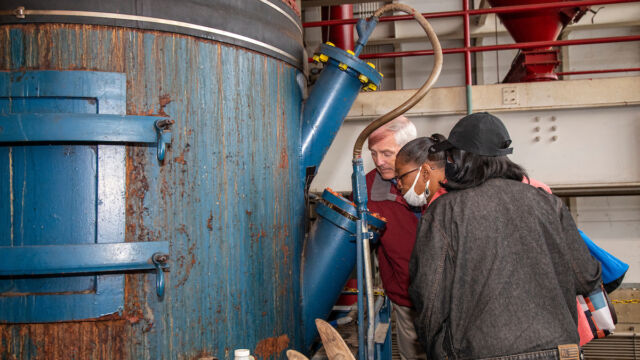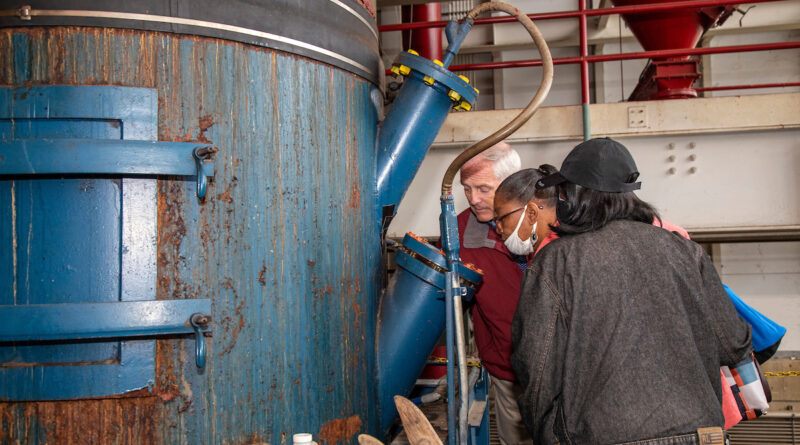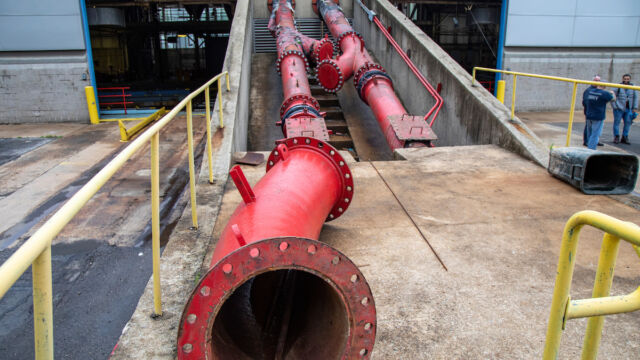New Waste Collection System Coming to Polo Grounds Towers
On May 19, Polo Grounds Towers residents and NYCHA staff toured Roosevelt Island to learn more about the Island’s waste collection system, which features a powerful vacuum that sucks trash through underground pipes. A similar system is planned for Polo Grounds Towers.
Roosevelt Island uses Automated Vacuum Assisted Collection (AVAC), also known as a pneumatic waste collection system. With a pneumatic system, residents throw trash away in the buildings’ trash chutes as normal, but instead of staff loading 40lb bags of compacted trash on carts and staging them in piles on the curb, a vacuum moves the trash through underground pipes to a central collection facility where it is compacted and stored until collection. At Roosevelt Island, trash is carried up to 60 miles per hour through the tubes and 10 to 13 tons of waste is collected per day.
In Asia and Europe, pneumatic systems are installed to improve quality of life in new urban neighborhoods and historic city centers; however, in the U.S., the only other major public-facing system outside of Roosevelt Island is at Disney World.
At Polo Grounds, NYCHA will connect all four 30-story towers to a central collection facility by replacing compactors at the bottom of trash chutes with a network of underground pipes. New input points for trash and recycling will be added at the ground floors. The final design will incorporate input from residents and staff; construction is slated to begin this year and be completed in 2024. Once finished, Polo Grounds’ pneumatic network is set to be the second major residential system in the country, the first in public housing, and the first to collect both trash and recyclables through the system.
During the tour, a NYC Department of Sanitation engineer showed participants the central collection facility, and the group visited two different buildings to see how their trash chutes connect to the pneumatic system. After, residents and staff had the opportunity to meet with property managers and ask questions about how the pipe system changed day to day operations inside their building.
The benefits of the pneumatic waste system are numerous: trash doesn’t pile up in or around the property, it improves the cleanliness of the development while reducing air pollution and pests; residents have easier access to recycling; workplace safety is enhanced when caretakers do not have to handle heavy bags of trash and can spend time on other work; sanitation trucks spend less time circling the development to pick up trash; and it will save NYCHA thousands of dollars annually in operating costs. The pneumatic system will only improve quality of life at Polo Grounds if residents use the chutes. More than tubes, this project is about working together to build trust.
